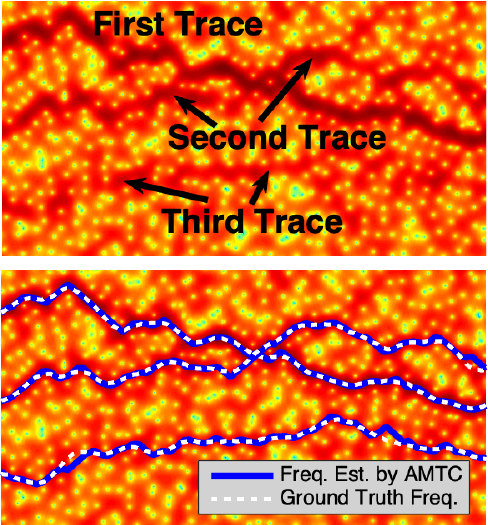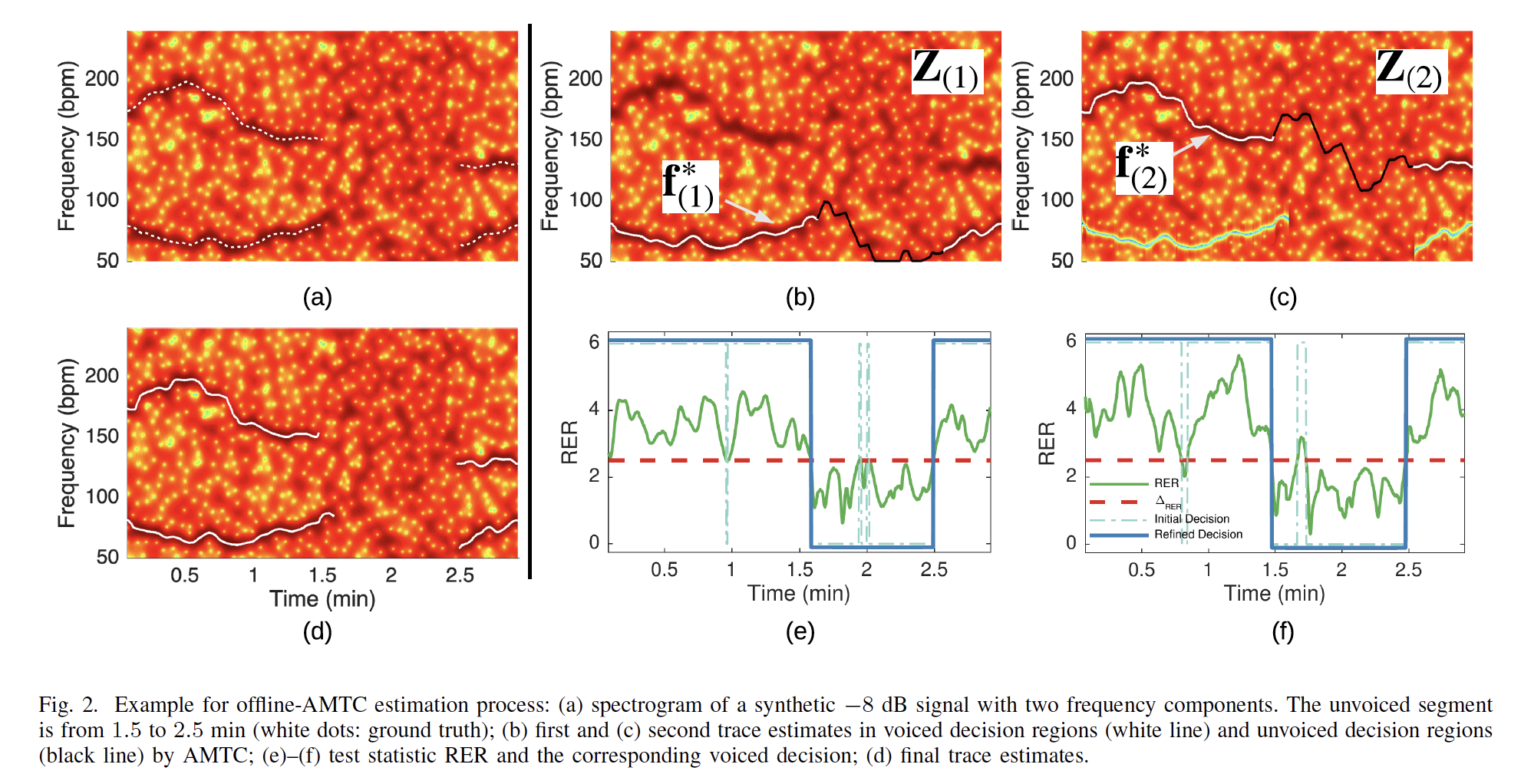Robust Frequency Tracking Weak Signal Traces Under Severe Noise and Distortions
Published in Electrical & Computer Engineering, University of Maryland, Collge Park, 2018

Abstract
Many information forensic challenges involving small signals often boil down to the problem of frequency extraction, which can be nontrivial as the signal might be severely corrupted by co-existing noise and interference.  To facilitate the authentication and the decision-making process for these forensic applications, we develop a robust frequency tracking approach to address the problem of tracking one or more subtle frequency components in very low signal-to-noise ratio (SNR) conditions. We treat the signal’s time-frequency representation as a visual cue and identify all frequency traces with dominating energy. Inspired by the seam carving algorithm for content-based aspect ratio adaptation of images, we propose the Adaptive Multi-Trace Carving (AMTC) algorithm for tracking multiple frequency traces in quasi-realtime through iterative dynamic programming and adaptive trace compensation. Extensive experiments using both synthesis and real-world forensic data reveal that the proposed method outperforms the state-of-the-art methods under low SNR conditions and can be implemented in near real-time settings. The success of this work may empower the development of new frequency-based forensic technologies and other small signal applications.
To facilitate the authentication and the decision-making process for these forensic applications, we develop a robust frequency tracking approach to address the problem of tracking one or more subtle frequency components in very low signal-to-noise ratio (SNR) conditions. We treat the signal’s time-frequency representation as a visual cue and identify all frequency traces with dominating energy. Inspired by the seam carving algorithm for content-based aspect ratio adaptation of images, we propose the Adaptive Multi-Trace Carving (AMTC) algorithm for tracking multiple frequency traces in quasi-realtime through iterative dynamic programming and adaptive trace compensation. Extensive experiments using both synthesis and real-world forensic data reveal that the proposed method outperforms the state-of-the-art methods under low SNR conditions and can be implemented in near real-time settings. The success of this work may empower the development of new frequency-based forensic technologies and other small signal applications.
Publications
- Q. Zhu, M. Chen, C.-W. Wong, and M. Wu, “Adaptive Multi-Trace Carving Based on Dynamic Programming”, Asilomar Conference on Signals, Systems, and Computers, 2018. [IEEE Xplore][Poster]
- Q. Zhu, M. Chen, C.-W. Wong and M. Wu, “Adaptive Multi-Trace Carving for Robust Frequency Tracking in Forensic Applications”, accepted by IEEE Transactions on Information Forensics and Security (TIFS), to appear. [arXiv]
Demo video of online-AMTC
Find below is the realtime frequency tracking result on a highly corrupted synthesized signal with 3 frequency components. The signal-to-noise ratio of the input signal is -10 dB.